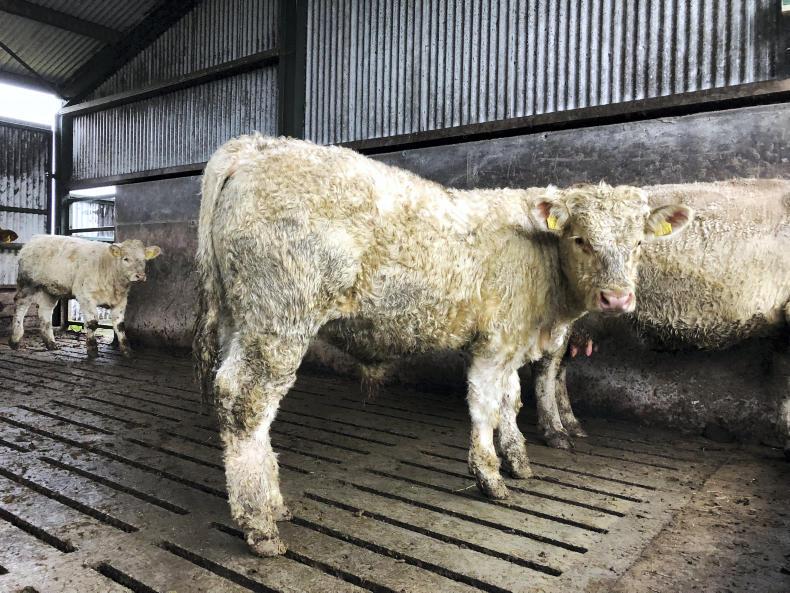Teagasc/Irish Farmers Journal BETTER Farm Beef Challenge participant Martin Downes is farming just over 87ha on the outskirts of Multyfarnham in Westmeath.
The land is somewhat heavy in nature but has excellent grass-growing potential – something that Martin, along with the help of the BETTER Farm management team, is trying to unlock over the course of the programme.
Last week, a group of companion BETTER Farm Beef Challenge participants visited Martin’s farm to hear more about his system and experiences over the last 12 months.
The system
The plan for the farm is to run 110 suckler cows, 150 ewes and buy in 100 bulls each year for finishing. Target stocking rate is 2.55LU/ha and target liveweight output is 1,095kg/ha. This is all geared towards increasing gross margin from €764/ha at present, to €1,200 in 2021.

In the past, Martin was renting land and had over 140 suckler cows. He took the decision to drop the land and reduce cow numbers to concentrate on maximising output form his own land.
The bull beef system operated includes slaughtering bulls under 16 months and at 20 months of age. Heifers are also taken to slaughter.
Labour
Labour is one limiting factor on the farm. To spread work load in the spring, cows calve in March and April to allow for quick turnout most years. This allows Martin to lamb the ewes in February.
While he is the sole, full-time labour unit, he admits: “I’m very much reliant on getting in help for a lot of the year. I have been getting students in recent years and I also get farm relief.”

“I would be banjaxed if I hadn’t help because there aren’t many jobs you can do on your own. Even having someone to bed sheds in the winter is very important.”
Martin did say phasing out the autumn calving helped somewhat in streamlining labour input on the farm.
Herd health
Buying-in stock increases a herd’s risk of infection. For Martin, he realised quickly that prevention (vaccinating) was a more attractive option that than the cure.
“I’m vaccinating for Lepto, BVD and IBR. We had a lot of Lepto problems about 20 years ago. We had BVD problems a few years ago and recently we also showed up high on IBR tests.”
Asked would he consider stopping Lepto and BVD he said: “Once you start vaccinating you’re inclined not to stop.”
Another thing Martin will be considering vaccinating for is calf scour. Over half of the group said they have begun vaccinating cows with Rotavec Corona to reduce instances of scour in calves which can have severe knock-on effects for performance and also labour around calving time.

Dry cow diets
Discussion on the day also included dry cow diets. Martin explained he always puts hay or straw into the diets of cows, along with silage, for much of the winter. Pre-calving minerals are then included after Christmas.
One of the group members pointed out that from their experiences, including 0.5kg soya/head/day six weeks prior to calving works exceptionally well to improve colostrum quality in cows after calving to reduce risk of calf infection. This view was echoed by a number of other farmers. Asked if this was expensive, the group worked out it would cost €0.20/cow/day or €6/cow/month.

To see how Martin plans to increase the grass growing potential of his land and to increase his kilos of output/ha on the farm, read the article in this week’s Irish Farmers Journal in print and online.






 This is a subscriber-only article
This is a subscriber-only article













SHARING OPTIONS: